Welcome to our Colossus Movie Guide for Dune. This guide contains our detailed library of content covering key aspects of the movie’s plot, ending, meaning, and more. We encourage your comments to help us create the best possible guide. Thank you!
What is Dune about?
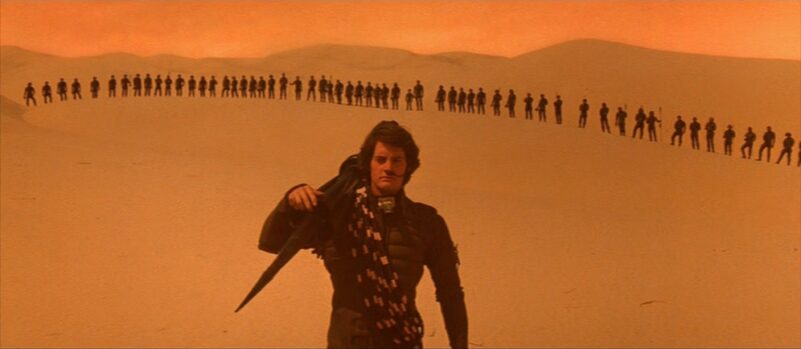
David Lynch’s Dune is a surreal take on Frank Herbert’s source epic that both adheres to the novel’s spiritual meditations on the human condition and serves as an updated critique of 1980s America. On the spiritual front, Paul is on a journey to overcome the greater powers that present gigantic obstacles in his journey to become the messiah, to become somebody through which society can find hope. Paul has trouble believing in himself, but the perseverance he shows parallels his slow and steady overcoming of malevolent rulers that put themselves before the greater good. This coming-of-age journey is familiar to anyone who’s felt torn between the weight of personal choice vs. destiny. Paul exemplifies that power is not something inherited, but earned; is not something used to dominate, but as a vehicle for change.
The four planets that make up the story—Arrakis, Caladan, Giedi Prime, and Kaitain—come to serve as a mirror for the modern anxieties of our society. The story explores the consequences of unchecked ambition and exploitation, pitting mighty, male-dominated powers like the Emperor and the Harkonnens against smaller factions like House Atreides and the Fremen. These four forces come to embody society’s collective angst regarding gender and sexuality—a theme especially relevant during the AIDS crisis of the 1980s, when the movie was released. The characters and the larger power struggle come to symbolize a very familiar societal uneasiness that steered politics and leadership in the wrong direction for years, that caused so much hurt for so many people. Dune critiques these gender roles and offers a kinder way of looking at civilization.
The battle for the spice melange can represent our real world struggle to protect the environment. Paul leads his people not only by embracing nature but by becoming one with it. At the end of the film, the rain washes away the bad and cultivate a new foundation from which to grow—a symbolic embracement of hope, rebirth, and the potential for harmony between humanity and nature. Paul showcases how we can foster a greater connection with our world by accepting each other.
Movie Guide table of contents
Cast
- Kyle MacLachlan – Paul Atreides
- Francesca Annis – Lady Jessica
- Kenneth McMillan – Baron Vladimir Harkonnen
- Richard Jordan – Duncan Idaho
- Jürgen Prochnow – Duke Leto Atreides
- Sean Young – Chani
- Patrick Stewart – Gurney Halleck
- Sting – Feyd-Rautha
- Paul Smith – The Beast Rabban
- Everett McGill – Stilgar
- Dean Stockwell – Doctor Wellington Yueh
- Leonardo Cimino – the Baron’s Doctor
- Brad Dourif – Piter De Vries
- José Ferrer – Padishah Emperor Shaddam IV
- Linda Hunt – the Shadout Mapes
- Freddie Jones – Thufir Hawat
- Virginia Madsen – Princess Irulan
- Silvana Mangano – Reverend Mother Ramallo
- Jack Nance – Nefud
- Siân Phillips – Reverend Mother Gaius Helen Mohiam
- Max von Sydow – Doctor Kynes
- Alicia Witt – Alia
- Frank Herbert – Author
- David Lynch – Writer, director
The ending of Dune explained
A recap of Dune‘s ending
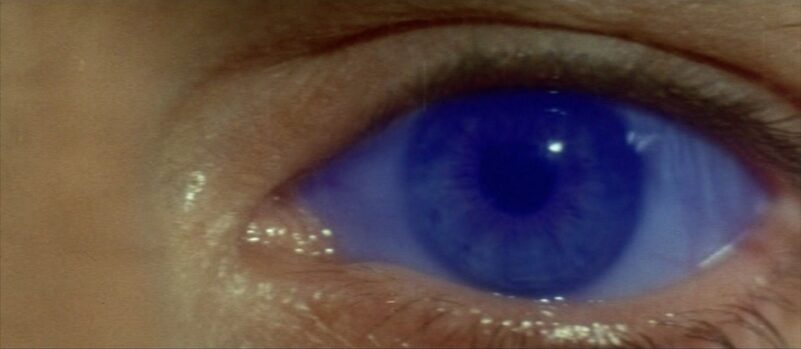
Dune concludes with Paul fulfilling the prophecy of the Muad’Dib, which allows him to become the leader of the Fremen and defeat the Emperor and House Harkonnen. In the film’s climax, Paul emerges victorious after a battle with Feyd-Rautha to the death, which consolidates his position as a leader on the desert planet Arrakis.
After his victory, Paul demonstrates his unprecedented control over the sandworms and the ecology of Arrakis by doing the impossible: making it rain on the desert planet. This proves to everyone the mystical connection he shares with the planet, fulfilling the Fremen prophecy of a messiah who would transform Arrakis into a fertile world.
With the Emperor dethroned and his own position as leader of the Fremen solidified, the movie ends with Paul taking his place as the de facto ruler of the universe. Alia declares him to be the Kwisatz Haderach, a prophesied beings who owns the superpower to be in many places at once. Dune closes with an indication that Paul’s rise ot power will have profound effects on the galaxy.
Paul’s transformation, society’s transformation
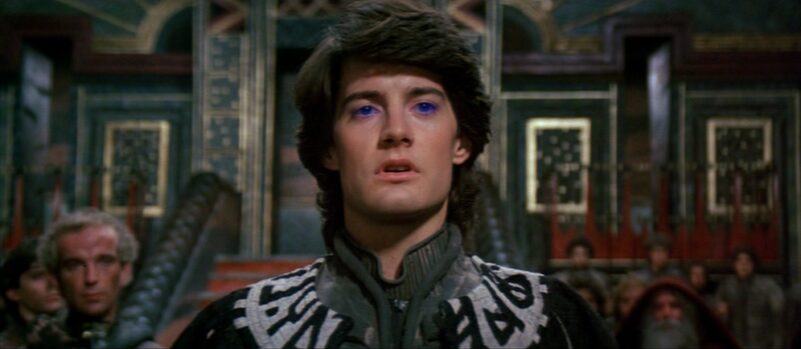
Paul has a final confrontation with the Emperor and Harkonnen forces, marking the culmination of his transformation and the fulfillment of his destiny. For Paul, it is both a spiritual and physical journey, an external and internal transformation. Internally, Paul needed to accept his destiny. Once a young nobleman who was untested and unaware of his full potential, Paul battles through numerous trials that test not just his physical abilities but his psychic strengths. He evolves from a reluctant heir to a powerful leader—a grueling transformation that forced Pal to confront his fears, question his beliefs, and ultimately alight his personal desires with a suppressed population that needs a leader.
Because of this internal journey, Paul learns to master his larger environment. his journey with the Fremen, from a stranger to their prophesied leader, is marked by his embracement and understanding of their desert—a barren land that seemingly represent loneliness and desolation in the wake of his family’s downfall yet secretly presents a blank canvas through which he can build a new version of himself. This slow and steady mastery of the desert aligns with his construction of power, from his command over the Fremen forces to his strategic battling with the Harkonnen and the Emperor to his eventual ability to control the sandworms and the production of the spice melange.
Paul’s tale exemplifies the power of genuine leadership, of the embracement of good morals. His leadership isn’t just the result of his birthright but is earned through his actions, through his belief in himself that he can become someone greater, someone who can lead everyone towards common good. These understandings are what help grow his psychic powers, are what position him to not only prove to himself that he can lead, but to everyone else as well. Accepting his journey means being content with disrupting the status quo, with recognizing things are not OK and that people are ready for something better. This journey signals how transformation doesn’t just take place on an individual level, but a societal one as well. Everything starts from within, and then builds its way out. In order to achieve enlightenment, we must first envision it, then embrace it, then exert it, then manifest it.
Why does it rain at the end of Dune?
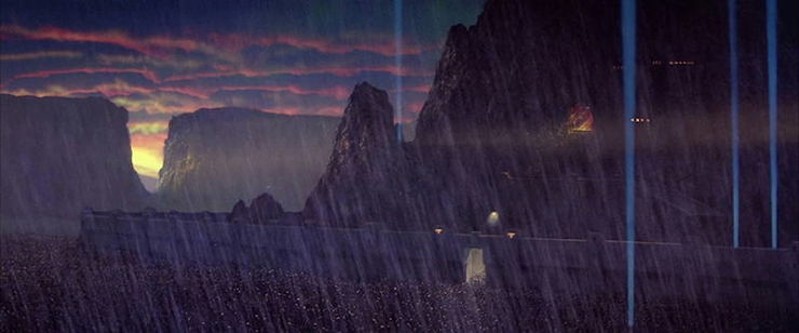
In the context of the story, the rain is the result of Paul fulfilling the prophecy. By becoming the Muad’Dib, Paul transforms Arrakis from a barren desert world to a land that can sustain life, that presents a blank canvas from which to build a new, more enlightened world. This event is the direct result of Paul’s newfound powers as the Kwisatz Haderach, meaning he has the ability to not only foresee the future but to influence it. The rain demonstrates Paul’s control over Arrakis’ ecosystem.
Thematically, the rain represents a sort of catharsis for both Paul and the world at large. The rain falls right after Paul defeats the Emperor and the Harkonnens, symbolically representing both removal and renewal: the rain washes away the stink and excrement that laid in the wake of the old order, and ushers in a new wave of leadership where we can grow and flourish. This plays into a larger ecological theme in the film where humans and nature learn to coexist under thoughtful, compassionate leadership. This moment of ecological restoration doesn’t just represent a new start for society, but for their leader Paul as well, who experiences a spiritual and moral awakening that will be used to lead his people.
The themes, message, and meaning of Dune
Dune’s critique of gender and sexuality
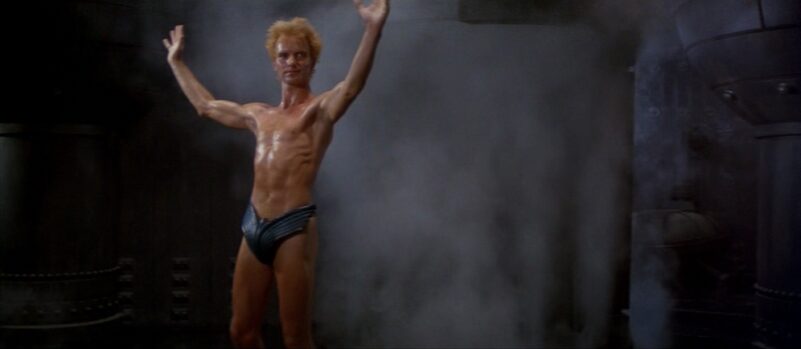
Gender and sexuality has always intrinsically been an important component of sci-fi narratives, especially in film where the dynamic can be visualized. One of the earliest and perhaps the most telling and influential example would be the Mashinenmensch, aka the “machine-human,” in Fritz Lang’s Metropolis, a robot that was unmistakably burdened with mankind’s views and insecurities surrounding gender and masculinity. The genre almost always feels like a commentary on the world at large, with its uncanny worlds serving as bizarre mirrors of our actual world, so these fictional reflections on sexuality and sexual orientation capture very real anxieties that plague mankind.
Dune continues this sci-fi tradition with its examination of public angst and trepidation surrounding gender and sexuality. And this movie came out in the 1980s, a time that was marked by cultural shifts regarding these topics due to the AIDS crisis. The way in which Lynch explores this topic through visual symbolism and his characters’ journeys directly challenges our society’s traditional representations of masculinity and femininity, serving as a critique of conservative values regarding gender relations.
Take the male-dominated universe that is depicted to us in the opening moments…by a woman. We start with an extreme close-up of Princess Irulan’s eyes, before pulling back to reveal her head floating ethereally in space, surrounded by miles of emptiness, by the vacuous realm that bounds her. Immediately, the film forces us to consider the female perspective in a male-dominated universe represented by figures like Padisha Emperor Shaddam IV and the Harkonnens.

This survey of masculinity takes shape as we get to know the political realm of Dune. As Paul Anthony Jonze notes in his essay on gender construction in Dune, the characters are divided into four distinct planets that respectively represent four social classes—and, in turn, four different depictions of gender and sexuality. “The Kaitains,” writes Jonze, “represent wealth, fortune and the upper class; the Caladans represent the hero soldier and family unit; the Fremens represent religion and faith; and the Harkonnens represent ‘80s attitudes towards homosexuality and anxiety of HIV and contamination.”
The mise-en-scene and imagery of Lynch’s adaptation of Herbert’s novel visually reinforces the original book’s ideas. For example, the home of the Emperor is lush with gold and lavish ornaments, dripping with the excess power and wealth exhibited by the ruling male. The Emperor is constantly place in the center of frame, with subordinate characters always occupying the sides of frames. This contrasts with small, scrawny Paul with his hair neatly groomed. He is strong and driven, no doubt, but lacks the visually pleasing muscle tone of, say, Feyd-Rautha or the Beast Rabban. Plus, some of the most treasured and character-defining relationships in his life are with women, and his interactions with men always seem to carry a tone of homoeroticism, a sharp contrast from the traditional male view of Reagan’s America (the era in which this film existed).
Lynch’s exploration of homoeroticism continues with the Harkonnens—especially Baron Harkonnen, a grotesque and sadistic man marked by supperating boils and obesity who lusts after his nephew in an almost cartoonish manner. His character, along with the rest of the Harkonnens, are clearly associated with both the threat of contagion and a subversion of heteronormative standards, symbolically capturing the homophobia surrounding the AIDS crisis and impending infection during the 1980s. As is the case with many of Lynch’s films, Dune‘s emphasis on the body, disease, and otherness symbolically captures the dark underbelly of the American psyche, with the exploration of identity, with the blurring of reality and fantasy.
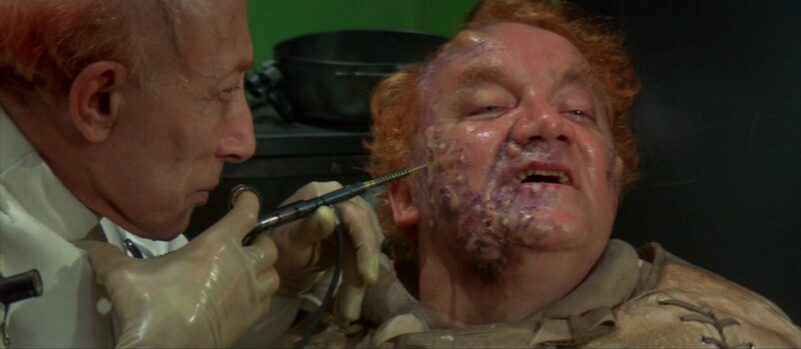
This general critique of masculinity and sexual orientation is strengthened by the powerful female characters of the movie, who essentially emasculate the male-dominated space. The emphasis on feminine space through characters like the Reverend Mother and Lady Jessica not only challenges patriarchal norms but reflects a broader thematic concerns with power dynamics, identity, and transformation. The Bene Gesserit, with its secretive sisterhood, uses its advanced mental and physi cal abilities to subvert traditional gender roles. They manipulate politics and genetics to achieve their goals, representing a form of power that is both cerebral and covert, as opposed to the overt, physical domination the male characters constantly exhibit.
As with the opening of the film, where a woman speaks about the men who initiate and control the patriarchal universe of Dune, a young girl’s speech shifts the closing of the movie away from typical male-dominated sci-fi narratives. This ending both recognizes and validates feminine wisdom, intuition, and leadership, positing these qualities as crucial for the future direction of the universe.
Now it’s your turn
Have more unanswered questions about Dune? Are there themes or motifs we missed? Is there more to explain about the ending? Please post your questions and thoughts in the comments section! We’ll do our best to address every one of them. If we like what you have to say, you could become part of our movie guide!

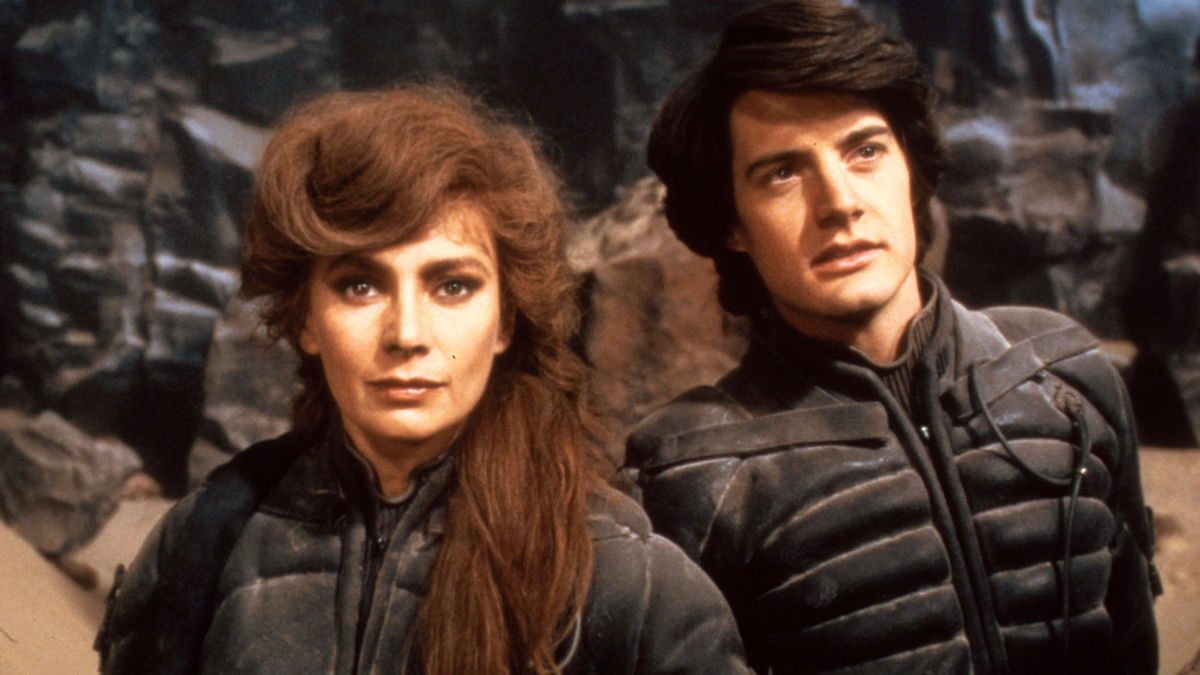
So are you a fan of HBO’s dune prophecy?